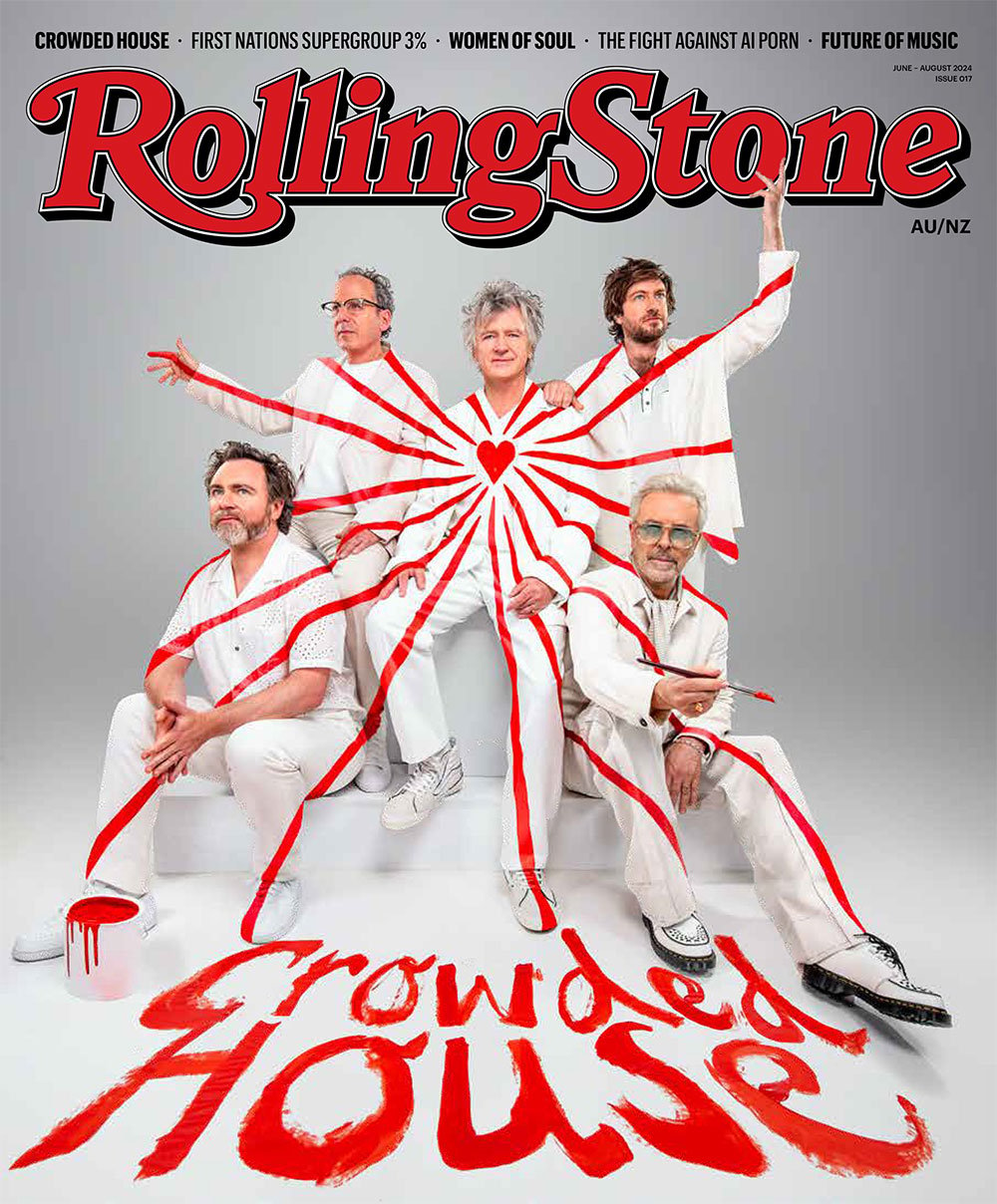By now, you know that on February 27th, Netflix dropped the third season of House of Cards, its diabolical, addictive political series that helped pioneer the streaming revolution and usher in the online-is-the-new-black era of TV viewing. For two seasons, we’ve tracked the often illegal, occasionally homicidal machinations of Frank and Claire Underwood, the reptilian D.C. power couple who give new meaning to the term “political animals.” And if you’re a fan of the show, you’ve likely already slogged your way through all of Season Three, if only to keep social media from ruining all the OMG moments for you ahead of time.
Related: ‘House of Cards’ Showrunner Talks Season Three Leak
But if you did spend the majority of your weekend sprint-viewing the further adventures of President Underwood and his Lady Macbeth-ish first lady, you’ve also probably picked up on the fact that things feel a little…different this time around. (Here there be spoilers; if you haven’t finished the new episodes yet, proceed at your own risk.) No dog necks are snapped, no comely journalists are hurled in front of a train, and no Secret Service agents find their way into the Underwoods’ bed. Instead of Machiavellian manipulations and mustache-twisting villainy, the show focuses on [gasp] the machinations of governing in the age of D.C. gridlock; there’s less perverse power plays and more actual politics. It’s an interesting way of mixing things up — and whether you miss the old-fashioned HoC soap operatics or not, there are certainly lessons to be learned. Here are five takeaways from the new season.
1. Absolute power is a myth.
When historian, author and prodigious-beard owner John Dalberg-Acton remarked that, “Power tends to corrupt, and absolute power corrupts absolutely,” he could have been writing Frank Underwood’s eventual epitaph. While the first two seasons reveled in how far the former Democratic majority whip will gleefully sink in order to ascend to highest office in the land, this new season deals with the reality — and responsibility — of having reached that goal.
When teasers for the latest batch of episodes premiered, they hinted at a megalomaniac gone mad with incidental power. After manipulating his way into the Oval Office with “not a single vote cast in my name,” this was a man who would continue his political chess-playing with every American citizen as a potential pawn. What we got was far more underwhelming: After years of plotting his road to the Presidency (and knocking down anyone who stood in his way), Frank has taken finally taken over the White House — and it seems to have exhausted him. After just a few months in office his approval rating is in the gutter, he’s being strong-armed by Congress, and the party leadership has made it perfectly clear that they won’t support his bid for a run in 2016. Frank’s slick maneuvering has delivered him exactly what he wanted, but it’s nothing that he expected it to be.
Such a challenge would serve as an impetus for Season One or Season Two Frank to launch into full-scale manipulation mania and many Shakespearean asides to the camera. Season Three Frank, a.k.a. Frank 2.0, is a more deferential leader who is focused on being relatable. “I have to do these sort of things now,” he tells the audience as he visits his father’s grave. “It makes me seem more human. And you have to be a little human when you’re the President.” (At which point he then pisses on dad’s headstone.)
Frank may be a brilliant strategist, but that doesn’t make him an effective leader. And just as he has disrespected those who’ve held the title of POTUS before him, the man in the Oval Office is discovering that it’s he who is in the line of fire, and that the only direction to go is down.

Lars Mikkelsen (L) and Kevin Spacey (R) in ‘House of Cards.’ David Giesbrecht for Netflix
2. Just because you can binge-watch a show doesn’t mean you should.
Though binge-watching is still in its relative infancy as a national pastime, it owes much of rise in popularity to streaming services like Netflix. It’s practically become obligatory that any new online-only series should be watched immediately and en toto — if only because you know that if you haven’t seen House of Cards‘ third season in its entirety already, some innocuous Tweet or article (like, for example, this one) will spoil all of the major plot points. But being able to digest a series in a single sitting and considering it the default way to experience a full TV season are two entirely different matters.
Part of HoC‘s immediate popularity when it debuted in 2013 was how each episode ran seamlessly into the next, making it a cinch to gulp down the show in one 13-hour marathon. While the series is constantly cited as part of the new trend toward “prestige TV,” its deliriously debauched characters and story lines keep one foot dangling over soapy territory (the same space that Scandal both occupies and straight-up owns now). Though the pace slowed down slightly during House‘s sophomore go-round, it was still relatively easy to breeze through an entire batch in a weekend. But Season Three has done a tonal about-face, where character-driven drama — particularly between Frank and Claire — has replaced action-driven scheming. And while that move would undoubtedly improve 90 percent of most overly plot-heavy serials currently playing/streaming on your screens, the switch-up feels like a stake driven into this Beltway fantasy’s black heart.
In past seasons, Beau Willimon’s show democratized its political background in a way that kept it intriguing without being overly complex. It worked: We like our D.C. power plays and skullduggery to be fun-sized. But Season Three sees Frank dealing with a range of issues, from Russia’s free-speech clampdowns (bring on Pussy Riot!) to gay rights, intently but half-heartedly. The writers seem intent on making grand, sweeping statements — not just on unemployment via a groundbreaking job-creation bill but on several other fronts as well, so much so that it all gets diluted. More damagingly, its heavy-handed treatment of hot-button topics make it less compelling to watch on a loop, thus reducing its overall binge-worthiness. In the same amount of time it takes you to sit through President Underwood preaching about the American Dream or standing up to a Putin avatar, you could walk from Baltimore to the White House — or watch K-PAX six-and-a-half times.
3. Two-term limits were established for a reason.
By now American audiences and television executives are probably tired of hearing about how well the British TV template works: That six to eight episodes offer the perfect time span to tell a fully fleshed out story, and that it’s okay to stop at two seasons. Even with 13 episodes a year, it’s a model that would have benefited House of Cards — which, coincidentally, is adapted from a four-part BBC miniseries.
This is a show about a man on a quest for power — a goal he reached by the end of Season Two when he crashed his way into a Vice Presidency then set up the POTUS. Mission accomplished; hail to the new chief. Had the first two seasons played out in exactly the same way — with the same ending we saw in the final moments — and then everyone called it a day, the show have been heralded as a bold experiment in alternative programming from beginning to end. And very likely as one of the better series finales of all-time. Knock, knock!

Kevin Spacey in ‘House of Cards.’ David Giesbrecht for Netflix
4. It’s Frank Underwood’s world and we’re just living in it.
Zoe Barnes, Peter Russo, Garrett Walker, Raymond Tusk, and Linda Vasquez are just a handful of the characters who have learned (the hard way) that saying “no” to Frank Underwood is not an option. In Season Three, it’s Claire’s turn.
The Commander-in-Chief may hold the enviable titles, but he’s long professed that he and Claire are equal partners in the life that they’ve created (some might say “manufactured”) for themselves. And even after we’ve spent nearly 40 hours living with them, the true nature of their relationship remains a bit murky: Is it sexual? It is platonic? Is it based solely on a mutual desire to rule the world with an iron fist? That uncertainty has lent a lot of intrigue to their story.
Frank and Claire may not be the perfect couple, but they’re perfectly matched — if only for the fact that they’re the kind of duo who could ply a Secret Service agent with alcohol, seduce him, then chuckle slyly about it in the morning over a cup of coffee. Their devotion to each other is the only stable thing House of Cards has ever known, and all of it is destroyed this season. Suddenly, we’re watching the painfully belabored unraveling of the Underwoods’ marriage, all because Frank finally says the five little words no woman ever wants to hear: You are nothing without me.
Whether this admission will draw Claire back into Frank’s fold or turn her into a public adversary is a question for Season Four. What the dissolution of their relationship did do in Season Three, however, was to rob the show of some of its bite. Two Underwoods are much scarier than one.
5. We gotta have more Cashew.
It’s hard to believe that a guinea pig (the sixth most popular pet in the U.S., less popular a plaything than mice or fish) could truly be the most beloved character on a series featuring a two-time Oscar winner. But there’s no denying that the breakout star is Cashew, hacktivist Gavin Orsay’s chilled out pet guinea pig, who remains delightfully calm even in face of being violently squished by one man’s shoe.
There’s also no denying that a large portion of the excitement surrounding Gavin’s unexpected return was the promise that we’d get to see more of his furry, Zen-like friend. And we did. For a split-second. In episode 10. [Insert sad trombone] To paraphrase Christopher Walken: HOC fans have got a fever — and the only prescription is more Cashew!






































